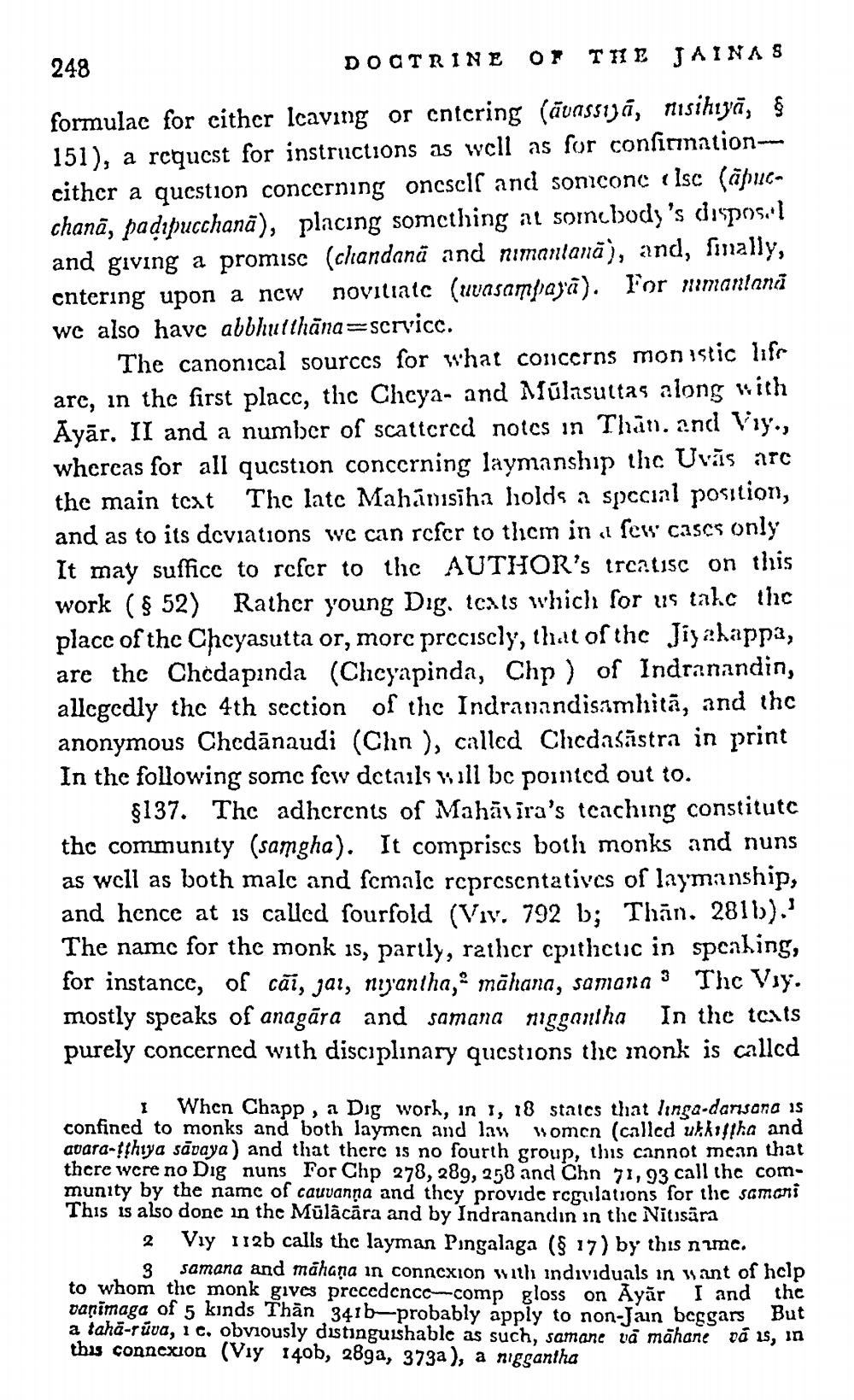________________
248
DOCTRINE OF THE JAINAS
formulac for either Icaving or entering (āvassijā, nisihiyā, § 151), a request for instructions as well as for confirmation cither a question concerning oncscls and sonicone e Isc (ābuca chanā, padipucchanā), placing something at somebody's disposal and giving a promisc (chandanā and nimantană), and, finally, cntering upon a new noviliatc (uvasampaya). For manlına we also have abbhutthāna=scrvicc.
The canonical sources for what concerns mon istic life are, in the first place, thc Chcya- and Mülasultas along with Ayār. II and a number of scattcrcd notcs in Thün. and Viy., whereas for all question concerning laymanship thc Uvās arc the main text The latc Mahānisiha holds a special position, and as to its deviations we can rcfer to thicm in a few cases only It may suffice to refer to the AUTHOR's trcatisc on this work ( § 52) Rather young Dig. texts which for us takc thc place of the Chcyasutta or, more precisely, that of thc Jiyahappa, are the Chidapinda (Chcyapinda, Chp) of Indranandin, allcgcdly thc 4th section of the Indranandisamhită, and the anonymous Chedānaudi (Chn), called Chcdasāstra in print In the following somc few details will be pointcd out to.
$137. The adhcrcnts of Mahävira's tcaching constitute the community (samgha). It comprises both monks and nuns as well as both malc and femalc rcprcscntatives of laymanship, and hence at is called fourfold (Viy. 792 b; Thān. 281b).' The namc for the monk is, parily, rather cpithctic in speaking, for instance, of cãi, jai, niyantha, mähana, samana 3 Thc Vay. mostly speaks of anagāra and samana niggautha In the texts purely concerned with disciplinary questions the monk is called
1 When Chapp, a Dig worh, in 1, 18 states that linga-dansona is confined to monks and both laymon and last womcn (callcd ulikifika and avara-fthiya sadaya) and that there is no fourth groun, this cannot mean that thcre were no Dig nuns For Chp 278, 289, 258 and Chn 71, 93 call the community by the name of cauvanna and they provide regulations for the samani This is also done in the Mülācāra and by Indranandin in the Nitisära
2 Vay 112b calls the layman Pingalaga ($ 17) by this numc.
8 samana and mahana in connexion with individuals in want of help to whom the monk gives prcccdcncc-comp gloss on Ayārl and the vanimaga of 5 kinds Thăn 341b-probably apply to non-Jain beggars But a tahā-rūva, 1 c, obviously distinguishable as such, samane và māhane di is, in this connexion (Viy 140b, 28ga, 373a), a niggantha




